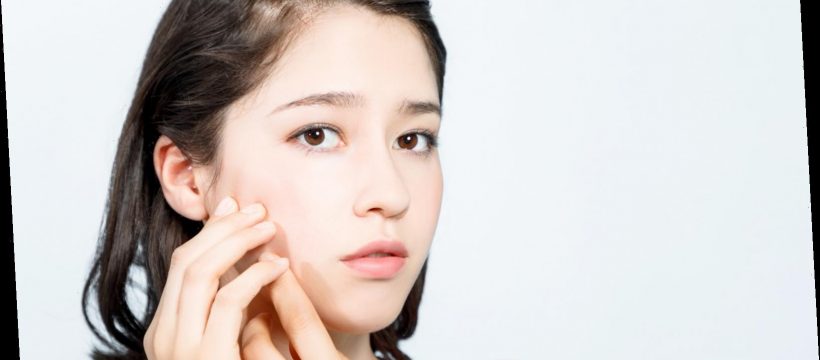
Pimples, acne, blackheads… why do these problems always seem to flare up in the same place? It’s a burning question many of us find ourselves asking. According to the Mayo Clinic, breakouts can happen “when your follicles become clogged with oil and dead skin cells.” The condition can cause blackheads, whiteheads, and pimples. While they are often scattered across your face, breakouts can be concentrated in one area as well.
The first step for treating acne is understanding the source. “We know that acne is actually a complex multifactorial skin disease that manifests in part from processes happening in the skin, usually as a direct result of signals from inside the body,” said New York-based dermatologist Rachel Nazarian in an interview with Glamour. “The body itself can send these signals due to natural causes such as normal hormones, or they can be triggered by emotions, stress, food, and medication.”
Dr. Nazarian suggested other factors can play a role in your acne, such as environment, allergies, and genetics. And of course, if you are a teenager, then the most common reason is puberty.
Harvard doctors say a sudden onset of concentrated acne could be a sign of a more severe condition

Then there’s the adult acne, a condition that can occur after the age of 25. Harvard Medical School dives deeper into the underlying causes of breakouts, specifically in one place. They note that hormones and stress can cause an increase in oil production, and that hormonal acne can be reoccurring and difficult to treat without the consultation of a dermatologist. Other factors when it comes to breakouts are due to “menstrual cycles, hair products, skin care products, and makeup that can clog the pores, as well as diet and a cause of inflammation throughout the body.”
Furthermore, corticosteroids, anabolic steroids, and lithium, can also cause acne. Harvard doctors also say that having a sudden onset of concentrated acne could be a sign of the beginning of more severe conditions, such as polycystic ovarian syndrome (PCOS). (Though acne is usually combined with “hair loss, excess hair growth, irregular menstrual cycles, or rapid weight gain or loss” in PCOS situations.) Medical News Today defines polycystic ovarian syndrome as a “hormonal disorder that is common among females of reproductive age.”
Women with PCOS can develop breakouts on their face, neck, upper back and chest. And doctors say these breakouts will usually be concentrated in one area, most likely the lower-third of the face, according to ConquerPCOS.org.
Now that you know the causes, how do you treat your acne?
Once you understand its source, now it’s time to treat it and practice future prevention actions. The American Academy of Dermatology lists 10 ways to treat hard to clear acne areas. Methods include: washing your face twice a day, avoid scrubbing acne prone skin, resist popping your pimple (which can cause further infection) and washing your pillowcases, which holds bacteria, dirt and dead skin cells that can clog pores. Doctors suggest giving acne treatment medications at least four weeks to work.
Other innovative treatment methods include microneedle patches, as reported by Insider, and laser treatments.
Since the COVID-19 pandemic broke out in early 2020, Healthline reported a new acne condition has developed called “maskne.” The breakout can cause pimples and skin irritation issues such as bumps around the mouth and chin area where masks are worn. Allergic reaction to mask materials can also cause breakouts, which is a reasons why doctors suggest disposable masks over cloth ones. Doctors advise tossing your disposable mask after each use.
To treat maskne, doctors suggest washing your face with a gentle cleanser and moisturizer twice a day, avoid wearing makeup such as foundation, and, if you choose to wear a cloth mask, wash it daily. Cloth masks hold in bacteria and oils that can further clog your pores.
Whatever you choose to do — understand that having acne is not the end of the world! When there’s a will, there’s a way.
Source: Read Full Article

